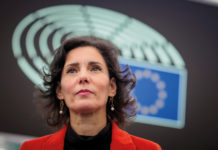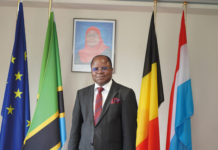The Siemens Energy Management Division won the Digital Solutions of the year award at the Africa Utility Week Industry Gala Awards, which took place in Cape Town on May 16, 2018.
The award recognises Siemen’s microgrid installation at the South African Headquarter offices in Johannesburg. The project provides an onsite example that showcases a cost effective and proven Siemens solution.
The energy efficient campus will generate its own green energy and provide a cost-effective energy mix. This enables the campus to become a centre of competence as its engineers become pioneers for the Siemens microgrid solution throughout Southern Africa.
Why microgrids are the future of Energy Management
The traditional power grid provides reliable power most of the time, but when natural disasters or security breaches threaten the grid, the subsequent blackouts can be catastrophic and costly.
It is for this reason that organisations and utilities are working together to build resilient, flexible power systems called microgrids. Operating either as part of traditional grid or independently (or both), microgrids are revolutionizing the way we manage our energy resources.

Why do microgrids matter?
A microgrid is a scaled-down version of the centralized power system. It can generate, distribute, and control power in a campus setting or small community.
Microgrids contain all the elements of complex energy systems. They maintain the balance between generation and consumption and they can operate on and/or off grid. They are ideal for supplying power to remote or poorly developed regions with no connection to a public network. In addition, more and more industrial operators are using microgrids to produce the electricity they need cost-effectively, sustainably, and reliably.
Microgrids use a variety of energy sources, including photovoltaic and wind-power plants as well as small hydro-power and biomass-power plants. Biodiesel generators and emergency power units, storage modules, and intelligent control systems ensure the security of supply.
- They are reliable and flexible
- They are resilient
- They are more secure
- They save money
- They store and incorporate renewable energy
Siemens provides a comprehensive portfolio of products, solutions, and services to help build and operate microgrids of any size. It provides generation and distribution of electrical energy as well as monitoring and controlling of microgrids.
In October 2018, Siemens launched the end-to-end distributed energy system at its South African headquarters in Midrand. The system is built around a 1 megawatt photovoltaic solar plant which is positioned on the Siemens Park campus, taking full advantage of the African sun.
The intelligence behind the system, a SICAM A8000 Microgrid Controller, captures the solar energy, it stabilises the Siemens campus grid in case of an outage and allows for cost-optimised energy consumption.
Excess energy is stored in a 1 kilowatt-hour SIESTORAGE installation, and the entire system is monitored, visualised, and controlled via MONET, an Internet of Things energy platform.
The system will be connected to the Siemens Desigo CC Building Management System in the next phase of the project and Smart Metering network installed in the buildings at the headquarters.
The installation of the Siemens Distributed Energy System (DES) solution is the first of its kind in Africa and is in line with the company’s goal to achieve carbon neutrality by 2030 through energy efficiency, decentralised energy systems, and the purchasing of clean electricity.
“Microgrids and distributed energy systems are the ideal solution for Africa because they are designed for a specific purpose, be it communities or industry,” the CEO for Siemens Southern and Eastern Africa, Sabine Dall’Omo, said.
“It also means you can have diverse power supplies, such as solar or wind during the day, then switch to other forms of generation like biomass when the conditions for renewable are poor.”
Electrification and the challenges of the African energy sector push private business, entities and communities to look for more innovative solutions and weaken their dependence on traditional power generation and delivery.
In addition to being designed to provide uninterrupted power, the DES can also help cut an organisation’s energy costs. “This system will drive down our organisation’s energy costs and cut carbon emissions,” Dall’Omo said.
“Compared to previous years, the DES here in Midrand has reduced the energy demand from the national grid by approximately 40%.” Sebastian Granow, head of the location management unit in South Africa. The major advantage of the DES is that it is made to ensure a steady and reliable electricity supply system that is both steady and reliable.
Solutions in Africa for Africa
For customers of Siemens, the Midrand project in Johannesburg provides a live and visualized human machine interface (HMI) showcase. The project could represent a prototype which shows what the future of corporate energy systems might look like. Furthermore, it is a step into the right direction to unlock the full potential of DES in Africa as a proven solution for its energy transition.
Stephan May, CEO of Medium Voltage and Systems at Siemens is well aware of the huge potential these solutions have for the whole continent: “In Africa, the overall energy demand is growing and businesses as well as municipalities can improve their energy footprint by adapting the solutions we realized in Midrand and start implementing Distributed Energy Systems.”
Africa, with its vast opportunities for renewable energy production and its challenges in the national energy grids, is on the edge of a fundamental change. It is for this reason that organizations and utilities are working together to build resilient and flexible power systems. Operating either as part of traditional grid or independently, these systems are revolutionizing the way we manage our energy resources.
Projects around the globe
Zooming out on a global scale, there are several other opportunities and projects combining renewable energy with a storage solution and an intelligent microgrid. “Businesses or communities all over the world are thinking about their energy strategies and that’s a huge opportunity. We want to help these customers to find solutions and meet their challenges. At Midrand, we show our reliable, proven and sustainable portfolio in action”, May adds.
Distributed energy systems are self-managed and stable, so they don’t need to be regulated by the overall grid operation. Thus, they help to reduce complexity and increase efficiency. It is an adaptable solution and, therefore, can manage the grid for a local municipality or community in Germany, provide energy to offices in South Africa and power a facility in China.
Local solutions are key for achieving global goals. With projects like the Midrand Microgrid, Siemens shows how to combine both and how to reduce its ecological footprint step by step, with each project helping to achieve the ambitious goal of becoming carbon free in the year 2030.
![[:fr]SIEMENS[:]](https://perspectives-cblacp.eu/wp-content/uploads/2018/12/SIEMENS-696x348.jpg)


